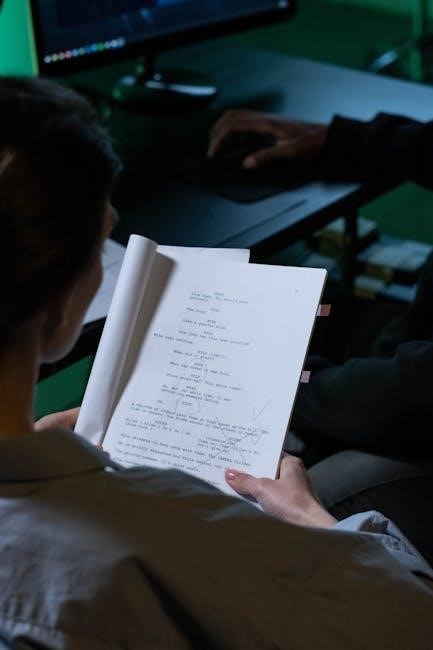In the world of storytelling, short films possess a unique ability to captivate, engage, and inspire audiences in a limited timeframe. These succinct cinematic gems allow filmmakers to explore various emotions, themes, and genres.

The Importance of a Script in Short Film Production
The script serves as a foundational blueprint for the entire production, influencing everything from cinematography to editing. Just as a building needs a solid plan, a short film relies on a well-crafted script to guide its creation. A compelling narrative, even within a mere five minutes, can leave a lasting impact, captivating audiences and sparking their imaginations. Think of the iconic characters of Woody and Buzz Lightyear, who, in a short span, captured hearts globally, proving the power of a concise, well-executed script. The script dictates the story’s flow, character development, and emotional resonance, ultimately determining the film’s success and memorability.
Understanding Short Film Length and Script Page Count
Short films generally range from one to thirty minutes; exceeding this length ventures into TV pilot territory, necessitating a reevaluation of the storytelling approach. For a five-minute short, conciseness is key. Remember that, generally, one script page equates to roughly one minute of screen time. Therefore, aim for a script that’s around five pages long. This constraint demands efficient storytelling, focusing on essential elements. A well-structured five-page script can deliver a powerful narrative punch, proving that brevity can indeed be the soul of wit in filmmaking. Embrace the challenge of telling a complete story within this limited framework.
Elements of a Compelling 5-Minute Short Film Script
A compelling five-minute short film script requires concise storytelling, well-defined characters, and a clear conflict with resolution. Each element must be efficiently woven together to create a lasting impact.
Concise Storytelling
Within the realm of short films, especially those constrained to a mere five minutes, concise storytelling is paramount. Every scene, every line of dialogue, and every visual element must serve a distinct purpose in advancing the narrative. There’s no room for meandering subplots or extraneous details. The script must be laser-focused, delivering the core message with efficiency and precision.
Think of it as distilling the essence of a feature-length film into its most potent form. This requires careful planning and ruthless editing, ensuring that only the most crucial components of the story make the final cut. The goal is to create a complete and satisfying narrative experience within a very limited timeframe.
In a 5-minute short film, character introduction and development must be achieved with remarkable efficiency. You don’t have the luxury of slowly revealing layers of personality. Instead, you must rely on impactful first impressions and subtle cues to convey the essence of your characters. A single action, a fleeting expression, or a carefully chosen line of dialogue can speak volumes.
Consider focusing on one defining characteristic or motivation for each character. This allows the audience to quickly grasp their role in the story and connect with them on an emotional level. While depth is important, brevity is key. Show, don’t tell, and let the story itself shape the audience’s understanding of the characters.
Conflict and Resolution
Conflict is the engine that drives any compelling story, and in a 5-minute short film, it needs to be immediate and intense. The conflict should arise early and escalate quickly, grabbing the audience’s attention and setting the stakes for the narrative. Consider a central conflict that directly challenges the protagonist and forces them to make a difficult choice.
The resolution, while swift, must be satisfying. It doesn’t necessarily need to be a happy ending, but it should provide a sense of closure and demonstrate the consequences of the protagonist’s actions. The resolution should also be thematically resonant, tying back to the initial conflict and providing a takeaway for the audience.

Sources for Free Short Film Scripts
Monologue Blogger provides creatives with a growing archive of scripts you can use for artistic endeavors. Original, unproduced short scripts are also showcased online for eager filmmakers.
Monologue Blogger’s Script Archive
Monologue Blogger offers a valuable resource for creatives seeking free short film scripts. This growing archive provides a diverse collection of scripts suitable for non-commercial projects, including video production, film exercises, acting practice, and drama school assignments. Creatives can explore various genres and story concepts within the archive, making it an excellent starting point for finding inspiration or sourcing material for their artistic endeavors.
The platform encourages users to share and promote its resources, fostering a collaborative environment for filmmakers and actors. Whether you’re a student, an aspiring filmmaker, or an experienced professional, Monologue Blogger’s script archive offers a treasure trove of opportunities to hone your skills and bring your creative visions to life.
Online Script Showcases
Online script showcases serve as platforms for writers to share their original short film scripts and gain exposure within the filmmaking community. These showcases often feature a diverse range of genres and writing styles, offering a valuable resource for filmmakers seeking fresh and unproduced material. Aspiring filmmakers can browse these showcases to discover unique stories and connect with talented writers.
These platforms provide opportunities for writers to receive feedback on their work and potentially attract interest from producers or directors. By participating in online script showcases, writers can expand their network and increase their chances of having their scripts produced. These showcases contribute to the growth of independent filmmaking.

Examples of Successful 5-Minute Short Film Concepts
Short films garner Oscars, launch careers, and dazzle audiences with bite-sized stories. A five-minute short film is an excellent calling card for a first-time filmmaker or writer eager to tell a story.
Family Dynamics
Explore the complexities of familial relationships within a condensed narrative. A man’s daughter invites him to dinner, aiming to reconnect after years of prioritizing his career. The film can capture the awkwardness, unspoken resentments, and potential for reconciliation in a single, poignant encounter. Alternatively, depict a family grappling with a secret or facing an unexpected challenge that tests their bonds. Consider a scenario where a child reveals a hidden talent or a parent makes a surprising confession, leading to a shift in the family dynamic. Focus on authentic emotions and relatable interactions to create a compelling and resonant story about family.
Personal Struggles
Delve into the internal battles individuals face in their daily lives. Lorna, grappling with grief after losing her best friend, finds solace in a doll resembling her. The film portrays her loneliness and coping mechanisms, highlighting the judgments she faces from others. Aile, a graduating student, wrestles with college choices, torn between her aspirations and family’s financial constraints. This internal conflict showcases the pressure and sacrifices young people make. These narratives explore themes of loss, identity, and self-discovery. The goal is to create empathy by showing the character’s vulnerability and resilience. Highlight the emotional journey and eventual acceptance or resolution.
Unexpected Encounters
Consider crafting a story around chance meetings that alter the course of a character’s day, or even their life. An example might show a traveler finding an old friend in a new city. Or it can show a brief conversation with a stranger on a bus that leads to a profound change in perspective. These narratives thrive on the element of surprise and the potential for human connection. The key is to focus on the immediate impact of the encounter. Explore how the characters react to each other and how the interaction changes their inner state. A little bit of mystery will draw in the viewer!
Script Writing Software and Formatting
If you are interested in producing professional work for the world of film, you will need to be familiar with scriptwriting format. Use software to get the format down easily for a 5-minute script.
ScriptBuddy
ScriptBuddy is a screenwriting software option available to those looking to properly format their scripts. This software handles all of the formatting necessities, so that the writer can focus on developing the creative aspects of their screenplay. With ScriptBuddy, you can start writing your script within mere minutes.
ScriptBuddy has a free basic version available to anyone. This software helps writers format their scripts efficiently. It allows writers to focus solely on the creative aspects of writing, rather than getting bogged down by the formatting process. If you are looking to properly format a 5-minute script, ScriptBuddy can help!
Standard Scriptwriting Format
If you are interested in creating works for the entertainment industry, then a familiarity with standard scriptwriting format is essential. Knowing the ins and outs of the accepted formatting practices used in film and theatre is key for any aspiring scriptwriter. This includes understanding elements like scene headings, action lines, character cues, dialogue, and transitions.
Adhering to standard scriptwriting format not only makes your script easier to read and understand for industry professionals, but it also demonstrates your professionalism and commitment to the craft. Mastering this format is a fundamental step for anyone serious about a career in screenwriting.

Tips for Writing a 5-Minute Short Film Script
Crafting a compelling narrative in a short time requires focus. A singular idea helps maintain clarity. Visual storytelling enhances the experience. End with impact for lasting resonance, leaving a memorable impression;
Focus on a Single Idea
When embarking on a 5-minute short film, the most crucial element is a singular, compelling idea. Due to the limited runtime, sprawling narratives and multiple subplots are simply not feasible. Instead, concentrate on a core concept that can be explored effectively within the given constraints. This approach not only makes the script more manageable to write but also enhances its impact on the audience.
A well-defined, central idea allows you to delve deeper into the emotions and nuances of the story, creating a more memorable and resonant experience for viewers. Resisting the temptation to cram too much into the script is key.
Create Visual Storytelling
Visual storytelling is paramount in a 5-minute short film where dialogue must be concise. Utilize imagery to convey emotions, plot points, and character development. Think about how each shot can communicate meaning without relying on extensive exposition. Effective use of camera angles, composition, and setting can speak volumes, enhancing the narrative’s depth and impact.
For example, a character’s isolation could be visually represented by framing them alone in a vast landscape. Embrace the power of visual cues to engage the audience and create a richer, more immersive viewing experience. Show, don’t tell; the best short films maximize visual communication.
End with Impact
The ending of a 5-minute short film is crucial; it’s the lasting impression you leave on your audience. Aim for an ending that resonates emotionally, provokes thought, or offers a surprising twist. This could be an unexpected revelation, a poignant moment of character growth, or a lingering question that stays with the viewer.
Avoid predictable resolutions; instead, strive for originality and emotional depth. A well-crafted ending can elevate your short film from a simple story to a memorable experience, ensuring your message lingers long after the credits roll; Make every second count and leave them wanting more.
Crafting a compelling 5-minute short film script is an exercise in precision, creativity, and impactful storytelling. By focusing on a single, strong idea, developing relatable characters, and structuring your narrative for maximum emotional resonance, you can create a cinematic gem that leaves a lasting impression.
Remember the importance of visual storytelling, concise dialogue, and a powerful ending. Utilize available resources like online script archives and scriptwriting software to streamline your process. With dedication and a keen understanding of the short film format, your 5-minute script can captivate audiences and launch your filmmaking journey.

